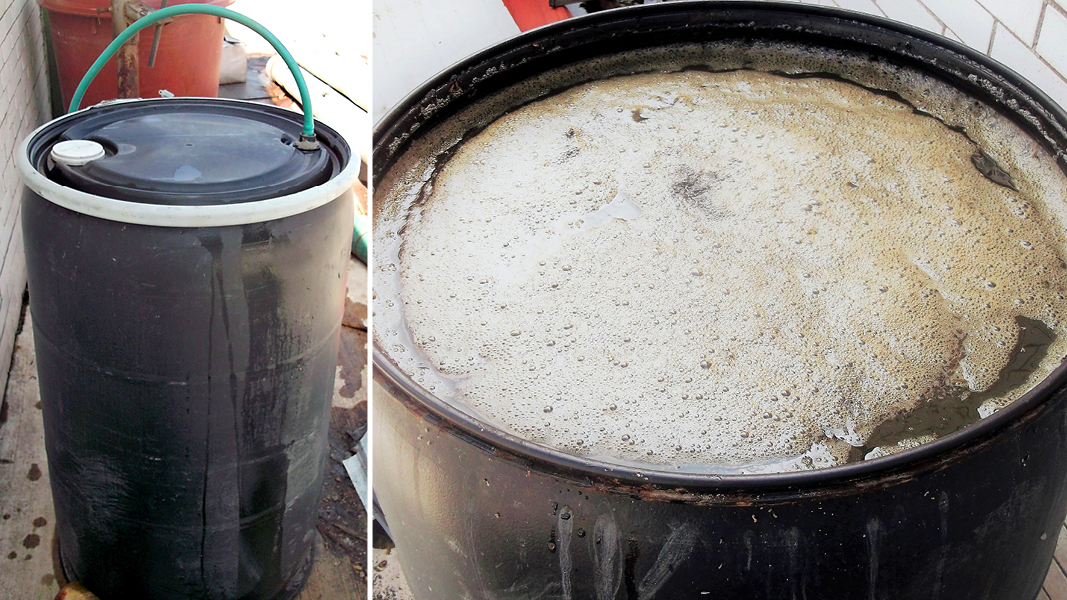Top: Low budget 50-gallon barrel digester will be one of the models tested by Montana State University. Photo courtesy of Roland Ebel
Montana State University (MSU) and the City of Bozeman, Montana are partnering to investigate use of household scale anaerobic digesters to reduce food waste and capture nutrients for reuse in home gardens. The project is one of 12 recently funded by the U.S. Environmental Protection Agency to support efforts to increase the capacity of anaerobic digestion (AD) in the U.S. As part of the two year grant, MSU researchers will inventory food waste produced by Bozeman households and evaluate two digesters to assess what feedstocks are best used in household digesters, challenges or barriers households face, and the impact of feedstocks on the quality and potential use of the resulting biofertilizer.
Roland Ebel, the grant’s Principal Investigator, says the team hasn’t decided yet on which models to test, but one will be a low budget option he made from a 50-gallon barrel and previously used on farms in Central Mexico. “It costs under $100 to make,” explains Ebel. “I know it is capable of digesting bland farm residues, but we want to figure out what [food waste] you could digest with a high quality result for reuse as a soil amendment or foliar fertilizer.” The digester is inoculated with molasses, fresh cow milk and animal manure and capable of producing a soil amendment or fertilizer in about six weeks in temperate climates. The other model will be a manufactured version with the ability to also capture methane. Currently Ebel is considering the HomeBiogas System that costs around $800, has a 200-liter (53 gallon) capacity, and includes a single burner stove for home use powered by methane produced by the digester.
Twelve Bozeman households will be selected to test one of the two anaerobic digesters and both models will be tested in tandem at MSU. For a period of about 8 to 10 months, participants will keep log books of what and how much food waste they produce, how much waste they put in the digester, if there are issues with smell or usability, and report how they will use the resulting digestate. Ebel hopes both digesters will be large enough to accommodate all the households’ food waste but says confirming this is one of the project goals.
The finished digestate will be analyzed for nutrients, organic matter, pH, heavy metals and pesticides, as well as tested on vegetable crops in a greenhouse study. The production and use of methane gas, however, will not be evaluated as part of this project as only one of the systems is capable of capturing methane. Households using the digester that captures methane will be able to use it for cooking if they choose.
Households will be selected to provide a diverse representation of sizes and income. To control for climate variations and ease of data collection, households will be located within a single neighborhood in Bozeman. Based on the information collected a manual will be produced instructing users on the best systems for home use, appropriate feedstocks and recommendations for using the resulting biofertilizer.
Other projects funded through the EPA grant include feasibility studies for use of AD at various scales, expansion of regional AD capacity, educational initiatives, and projects seeking to leverage partnerships to increase use of AD and codigestion.
—Katrina Mendrey













